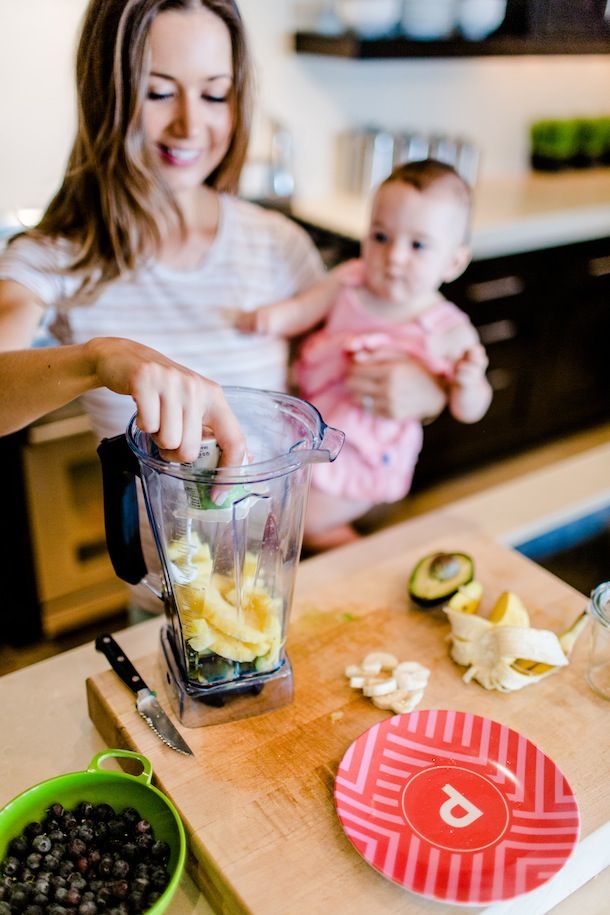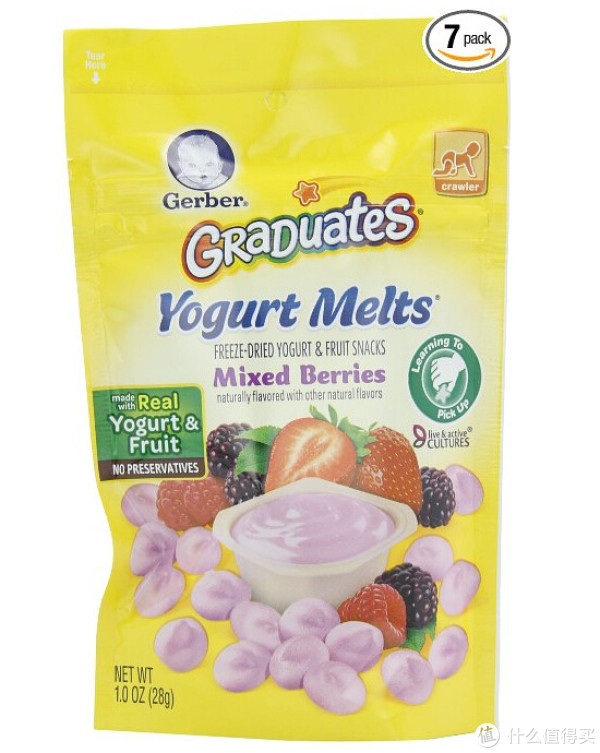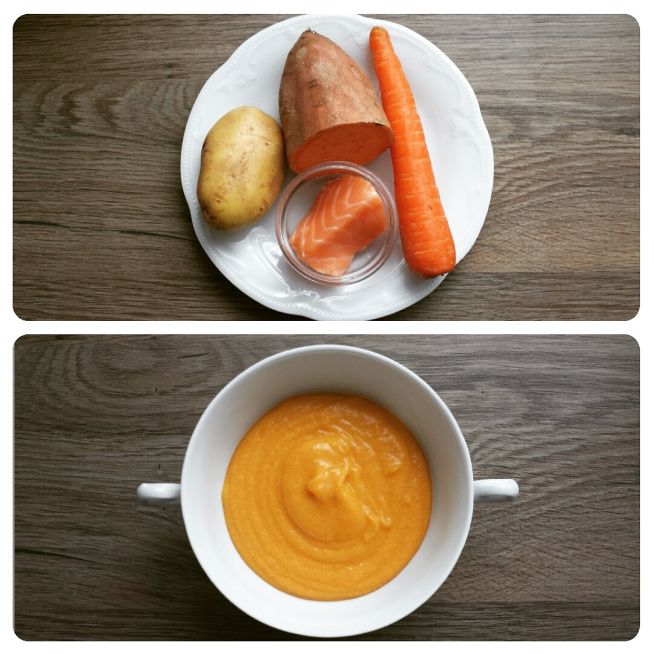Good first baby finger foods
Best Early Finger Foods for Baby (With Tips, Visuals, and Recipes)
Use this list of safe, nutritious, and easy to eat finger foods for baby to help you know exactly what (and how) to offer at meals and snacks. Plus, find the best first finger foods, troubleshooting tips, and visuals of foods broken down by food group to keep things easy!
Finger Foods for Baby
After baby starts solids and is ready to move onto finger foods, you may feel a little confused by exactly what to serve and how to serve it. Which is totally normal because it can be scary to let baby feed themselves this way and we may not have any experience doing this—or we may have totally forgotten from our last kiddo!
This list of finger foods for baby will cover some great first finger foods to start with, then set you up with plenty of healthy options from each food group.
TIP: Find more info on starting solids here and the best foods to start with if doing baby led weaning or purees with baby.
Healthy Baby Food
I love sharing these ideas for baby food since they are easy to prepare and serve and because I know how hard it can be to continue to come up with flavorful and healthy meals and snacks for our little ones. Let me tell you, I’m on my third kiddo and it can be such a challenge to feed him during the chaos of parenting the rest of my crew! These foods are wholesome and nutritious—perfect for your baby.
TIP: I’m a big fan of SpoonfulONE, a company that offers the most complete way to introduce food allergens to our kids. They make mix-ins, puffs, and crackers that are yummy and easy for babies and toddlers to eat. Learn more about their pediatrician-approved baby foods here. (sponsored link)
Best First Finger Foods
When baby is around 9 months, you’ll notice that they’re able to pick up smaller pieces of food with two fingers. This is known as the “pincer grasp” and is a sign that they’re ready to start finger foods. To be clear, when I say “finger foods” I mean small pieces of food that a baby (or toddler) can feed themselves.
To be clear, when I say “finger foods” I mean small pieces of food that a baby (or toddler) can feed themselves.
Here are some of my favorite ones to start with that are all super soft, safe to eat, and easy to pick up.
- Scrambled egg, broken up into small pieces
- Roasted sweet potato mashed and broken up into small pieces
- Fresh raspberries, broken up into smaller pieces
- Oatmeal, cooked according to package directions and allowed to cool
- Tofu, diced and sauteed lightly or steamed
- Ground beef, chicken, or turkey, broken up into small pieces or lightly mashed meatballs
- Shredded cheese or crumbled goat cheese
- Mashed sweet potato, in little pieces
- Peanut butter puffs
TIP: You can serve the tofu, ground meat, or meatballs in veggie puree from a pouch or a simple marinara sauce for extra moisture and flavor. Learn more about how and why to introduce peanut butter.
Finger Foods for Baby: Fruits and Veggies
Some of my favorite early fruits and veggies to serve babies are:
- Mashed roasted sweet potato, broken up into small pieces
- Warmed frozen peas, slightly mashed if desired
- Roasted Zucchini
- Diced Roasted Sweet Potato or Butternut Squash
- Fresh blueberries, cut in half or quarters
- Fresh raspberries, broken into small pieces
- Banana, broken into small segments (they are less slippery this way versus slicing them)
- Avocado, diced and mashed slightly (be sure it’s ripe and very soft)
TIP: A good rule of thumb is to serve pieces of food that are about the size of a pea to start and soft enough that they are easy to squish between your fingers.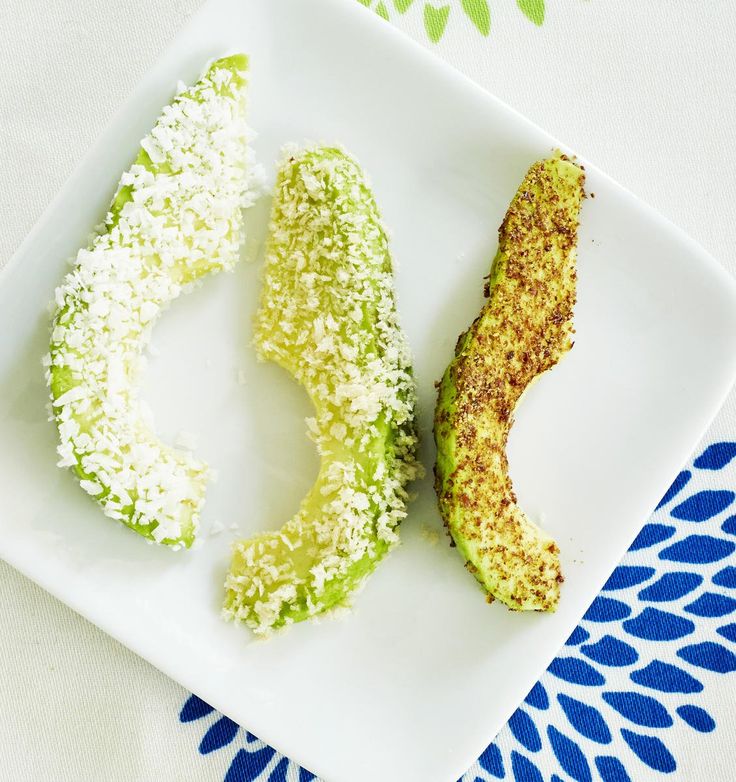 This will be easy for baby to pick up and eat and will also reduce chances of choking.
This will be easy for baby to pick up and eat and will also reduce chances of choking.
Finger Food Ideas: Carbohydrates
Offering complex carbohydrates can provide fiber, a variety of textures, B vitamins, and more. Try these with your baby.
- Spinach pancakes (moisten with applesauce or plain yogurt if needed; this recipe is particularly moist and great for babies)
- Oatmeal, cooked according to package directions and allowed to cool
- Baby Puffs
- Peanut Butter Puffs
- Rice (it’s easiest if it’s in little clumps so baby can pick it up; this Coconut Rice or this Cheesy Rice are both good options)
- Baby Banana Muffin
- O cereal (soften in nondairy unsweetened milk or yogurt as needed)
- Baked Oatmeal, diced
Finger Food Ideas: Proteins
Offering proteins will continue to expose baby to a range of nutrients. These are my go-tos for babies newer to finger foods—and toddlers too.
- Shredded cheese (thicker cuts are a little easier to pick up)
- Tofu, diced and sauteed lightly or steamed
- Flaked cooked wild salmon
- Lightly mashed meatballs
- Shredded chicken, cut up finely (we love this Butter Chicken to share with baby)
- Ground beef, turkey, or chicken, broken into smaller pieces
- Lightly mashed beans
- Scrambled eggs, broken up into small pieces
- Diced egg muffins
I’d love to hear any questions you may have, or if you have foods that your babies enjoy that I didn’t include here.
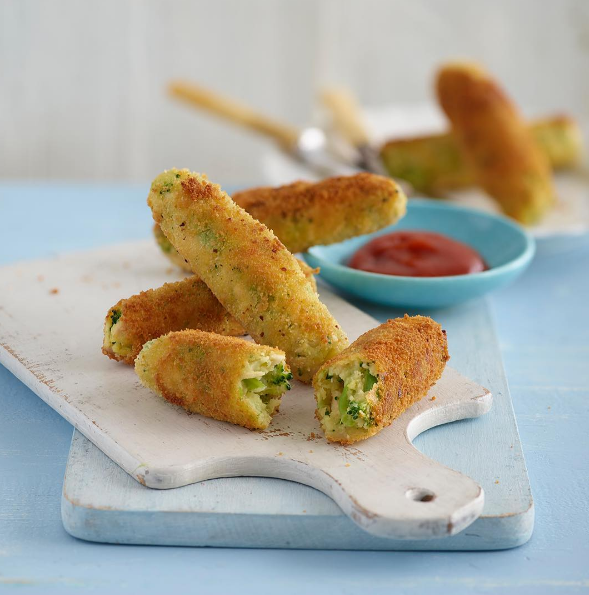 Chime in below in the comments!
Chime in below in the comments!Prep Time 5 minutes
Cook Time 5 minutes
Total Time 10 minutes
Author Amy Palanjian
Cuisine American
Course Baby Food
Calories 124kcal
Servings 1
First Finger Foods (choose 1-3 per meal)
- ▢ 1 Scrambled egg (broken up into small pieces)
- ▢ 1/4 cup Roasted sweet potato, mashed and broken up into small pieces
- ▢ 1/4 cup Fresh raspberries (broken up into smaller pieces)
- ▢ 1/4 cup Oatmeal (cooked according to package directions and allowed to cool)
- ▢ 2 tbsp Tofu (diced and sauteed lightly or steamed)
- ▢ 2 tbsp ground beef, chicken, or turkey, broken up into small pieces or lightly mashed meatballs
- ▢ 2 tbsp shredded cheese or crumbled goat cheese
- ▢ 1/4 cup Mashed sweet potato (broken into little pieces)
- ▢ 1/4 cup Peanut butter puffs
Fruits and Veggies
- ▢ 1/4 cup mashed roasted sweet potato (broken up into small pieces)
- ▢ 1/4 cup warmed frozen peas
- ▢ 1/4 cup Roasted Zucchini
- ▢ 1/4 cup diced Roasted Sweet Potato or Butternut Squash
- ▢ 1/4 cup blueberries (cut in half or quarters)
- ▢ 1/4 cup raspberries (broken into small pieces)
- ▢ 1/4 cup banana slices (broken into small segments—they are less slippery this way versus slicing them)
- ▢ 2 tbsp avocado (diced and mashed slightly—be sure it's ripe and very soft)
Whole Grains and Carbohydrates
- ▢ 1 Spinach pancakes (moisten with applesauce or plain yogurt if needed; this recipe is particularly moist and great for babies)
- ▢ 1/4 cup Oatmeal (cooked according to package directions and allowed to cool)
- ▢ 1/4 cup Baby Puffs
- ▢ 1/4 cup Peanut Butter Puffs
- ▢ 1/4 cup fully cooked rice (it's easiest if it's in little clumps so baby can pick it up; this Coconut Rice or this Cheesy Rice are both good options)
- ▢ 1 Baby Banana Muffin
- ▢ 1/4 cup O cereal (soften in nondairy unsweetened milk or yogurt as needed)
- ▢ 1/4 cup Baked Oatmeal (diced or regular oatmeal broken into little pieces)
Dairy
- ▢ 2 tbsp Shredded cheese (such as mozzarella)
- ▢ 2 tbsp Tofu (diced and sauteed lightly or steamed)
- ▢ 2 tbsp flaked cooked wild salmon
- ▢ 1 lightly mashed meatballs
- ▢ 2 tbsp finely shredded chicken (we love this Butter Chicken to share with baby)
- ▢ 2 tbsp ground beef, turkey, or chicken (broken into smaller pieces)
- ▢ 2 tbsp lightly mashed beans
- ▢ 1 Scrambled egg (broken up into small pieces)
- ▢ 1 Diced Egg muffins
For each meal or snack, choose 2-3 foods from a mix of food groups.
 Aim to include some fat in most meals and protein in many too.
Aim to include some fat in most meals and protein in many too.Prepare the food, cutting into small pieces and/or mashing as needed to make the food easy to eat.
Start with small portions and allow more as baby indicates according to their hunger.
- Store leftovers in an airtight container for 3-5 days in the fridge.
- Many foods you cook for your family will work as baby finger foods—just be sure they are easy to squish between your fingers and the pieces are small and easy to chew.
- Babies very normally make a lot of faces when they eat, so don't assume they don't like something just because they scrunch their nose!
- Flavors and textures can take time to learn to eat, so continue offering foods in small portions even if baby hasn't liked them in the past—and make sure they taste good to you!
Calories: 124kcal, Carbohydrates: 14g, Protein: 7g, Fat: 4g, Saturated Fat: 1g, Polyunsaturated Fat: 1g, Monounsaturated Fat: 2g, Trans Fat: 1g, Cholesterol: 164mg, Sodium: 81mg, Potassium: 344mg, Fiber: 4g, Sugar: 5g, Vitamin A: 9857IU, Vitamin C: 18mg, Calcium: 51mg, Iron: 1mg
Tried this recipe?Rate in the comments and tag @yummytoddlerfood on IG!
13 Best Finger Foods for Baby
Introducing finger foods for baby is an exciting and nerve-racking time.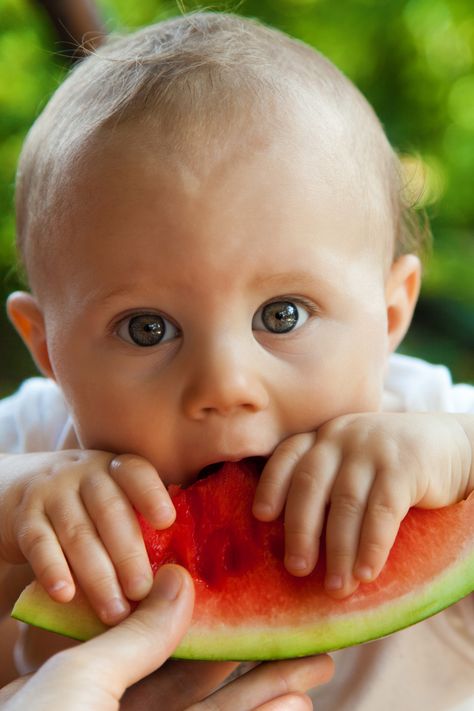 Between the mess, possible allergies and potential choking hazards, it’s enough to give some parents white knuckles as they hover over the high chair. But while you should certainly exercise caution, there are lots of great baby finger food ideas that will make mealtime fun and nutritious, and let your growing child practice the important art of self-feeding.
Between the mess, possible allergies and potential choking hazards, it’s enough to give some parents white knuckles as they hover over the high chair. But while you should certainly exercise caution, there are lots of great baby finger food ideas that will make mealtime fun and nutritious, and let your growing child practice the important art of self-feeding.
In this article:
When can babies eat finger foods?
Baby finger food safety
How to introduce new finger foods for baby
Best finger foods for baby
When Can Babies Eat Finger Foods?
There’s no hard and fast rule in terms of when babies can start eating finger foods, says William Dietz, MD, PhD, director of the Sumner M. Redstone Global Center for Prevention and Wellness at the Milken Institute School of Public Health at the George Washington University in Washington, DC, and co-editor of the American Pediatric Association’s (AAP) Nutrition: What Every Parent Needs to Know. Rather than focusing on baby’s age, says Dietz, “the first indicator you should look for is that the baby is interested.” So how can you tell when baby’s interest is piqued? Reaching for the food as you’re feeding her, grabbing the bowl or spoon, putting the spoon in her mouth and fussing when she sees you eat (because she wants in!) are all signs your child may be ready. “Babies generally want to feed themselves,” Dietz says. “That’s a normal drive.”
Rather than focusing on baby’s age, says Dietz, “the first indicator you should look for is that the baby is interested.” So how can you tell when baby’s interest is piqued? Reaching for the food as you’re feeding her, grabbing the bowl or spoon, putting the spoon in her mouth and fussing when she sees you eat (because she wants in!) are all signs your child may be ready. “Babies generally want to feed themselves,” Dietz says. “That’s a normal drive.”
Being able to sit independently is another good clue that babies are physically ready to try finger foods, says Susan M. McCormack, MA, senior speech language pathologist at Children’s Hospital of Philadelphia and a board-certified specialist in swallowing and swallowing disorders. If they can sit up in the high chair, then they might be ready to try their hand at finger foods.
Some guides suggest waiting to introduce baby finger foods until your child has mastered a pincer grasp—the ability to pick up small objects between the thumb and forefinger—but Dietz says this isn’t totally necessary. “Initially when children start to feed themselves, they don’t have a pincer grasp,” he says. “So they’re using their whole hand and putting their hand in their mouth. And that’s fine.”
“Initially when children start to feed themselves, they don’t have a pincer grasp,” he says. “So they’re using their whole hand and putting their hand in their mouth. And that’s fine.”
If you’re waiting for your infant to sprout teeth before moving on from purees, think again. “Babies don’t need teeth to learn to eat solids and learn to chew,” McCormack says. Those strong little gums are perfectly capable of mashing up soft solids—if you’ve ever let baby teethe on your finger, then you have some idea of just how powerful they are!
Baby Finger Food Safety
When choosing the best finger foods for baby—whether you’re starting at 6 months or 9 months—experts agree that it’s best to begin with small pieces of soft food that dissolve easily.
As your infant grows and becomes comfortable eating finger foods, you can branch out, McCormack says. “As a baby develops better tongue patterns to control food pieces as well as more mature chewing, he can better ‘chew’ the foods that break apart, like pieces of fruits and vegetables. A one-year-old can also bite off pieces of food that a 6-month-old can’t.”
A one-year-old can also bite off pieces of food that a 6-month-old can’t.”
Avoid giving baby finger foods that are large, sticky or don’t dissolve easily, because they’re potential choking hazards, Dietz warns. He suggests steering clear of foods like hot dogs, carrots, nuts, grapes, popcorn, candy and globs of peanut butter.
Another thing to keep in mind when you’re picking out the best finger foods for babies is that a lot of adult foods—particularly snacks—can be super salty. “Often parents will doctor a food so it appeals to their tastes, and their taste may have bigger amounts of sodium than a baby’s taste,” Dietz says. When preparing food for baby, leave out the salt whenever possible. (You can always add it separately to your portion if you’re cooking for the family).
How to Introduce New Finger Foods for Baby
When babies first start on finger foods, breast milk and formula will still be their main source of nutrition, followed by purees. You should continue to spoon-feed your child initially, “but during the feeding process, they should also be allowed to feed themselves,” Dietz says. Put some finger food on her high-chair tray and let her try to get it into her mouth in between the spoonfuls of food you’re feeding her. If she gets really frustrated, go ahead and help her out.
Put some finger food on her high-chair tray and let her try to get it into her mouth in between the spoonfuls of food you’re feeding her. If she gets really frustrated, go ahead and help her out.
Most important, follow your child’s cues and “let your baby be the guide,” McCormack says. If he doesn’t respond positively, take a step back and try again later. But keep in mind that babies often crinkle up their faces when they try something new, which can look like they don’t like something, Dietz says. It can take up to 20 times before they’re used to certain foods. “Parents shouldn’t force food, but they should be persistent in offering,” Dietz says.
McCormack also suggests easing into finger foods by offering thicker purees with a bit of texture to them. “Try alternating bites of the smooth puree with a slightly thicker or mashed food to help your baby get used to the new textures in her mouth,” she says.
Remember, too, that this is a messy process. Parents might want to lay newspaper or an easy-to-clean vinyl tablecloth on the floor, since it’ll be a while (like, years) before your kid manages to get more food in his mouth than on the floor, Dietz advises.
Finally, never leave baby unattended while she’s eating, and keep an eye out for signs of choking. It may be tempting to hold off on introducing finger foods until your child is older, but helping baby develop this skill has multiple benefits, McCormack says, including “development of independence, fine motor skills and self-feeding skills, as well as development of oral patterns to support texture progression.” Whether you start baby finger foods at 6 or 9 months, just follow baby’s lead and let him have fun with it.
Best Finger Foods for Baby
If you’re looking for baby finger food ideas, think about options that are soft, small and easily gummed. Here are a few of the best finger foods for baby to get started—including finger foods for baby with no teeth! While the same finger foods are as appropriate for a 6-month-old as they are for a one-year-old baby, you can begin to offer slightly larger pieces that they can bite off themselves as they become more confident.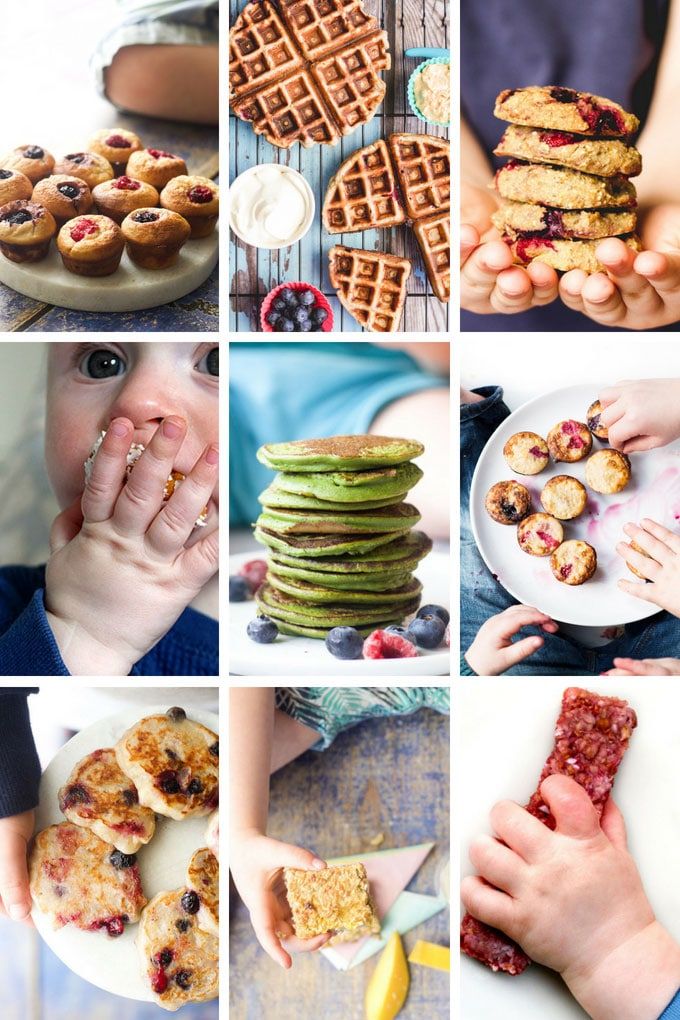 Stick with these healthy options, and you’ll start baby off on the right path for healthy eating.
Stick with these healthy options, and you’ll start baby off on the right path for healthy eating.
Image: The Bump
1. Puffs and dry cereal. Puffs and O-shaped dry cereal are some of the most popular first finger foods for good reason: They let baby practice the pincer grasp by picking up one at a time. And as McCormack explains, they also “mix well with saliva and are easy for the infant to manage in their mouth without choking.”
2. Teething biscuits and lightly toasted bread. Teething biscuits and small pieces of lightly toasted bread are another great starter finger food, since they soften quickly. Just note that some breads can turn gummy and stick in baby’s mouth; lightly toast the bread and cut into very small pieces to avoid a choking hazard. As baby gets older (around 9 to 12 months), you can offer slightly larger pieces or serve bread topped with mashed banana or avocado, or a super-thin layer of hummus or peanut butter.
3. Scrambled eggs. Doctors used to advise waiting to introduce eggs, but the AAP now recommends early exposure to potentially allergenic foods. Which is great news, since scrambled eggs are an ideal early finger food! Keep your love of runny yolks to yourself for now, however, and cook those eggs thoroughly, cut into small pieces and avoid adding salt.
Scrambled eggs. Doctors used to advise waiting to introduce eggs, but the AAP now recommends early exposure to potentially allergenic foods. Which is great news, since scrambled eggs are an ideal early finger food! Keep your love of runny yolks to yourself for now, however, and cook those eggs thoroughly, cut into small pieces and avoid adding salt.
4. Soft fruit. Very ripe fruit is naturally soft, making them some of the best finger foods for babies. Ripe banana, peach, watermelon, raspberries, blueberries and cantaloupe cut into small pieces are all great finger food options.
5. Avocado. A rich source of omega-3 fatty acids—which can help boost baby’s brain development—avocados are, like puffs, often one the first baby finger foods, even when your little one has no teeth. Be warned: Avocado can get messy fast, but it’s well worth it (and can result in some hilarious pics for the baby album).
6. Pasta. Though recipes often recommend cooking pasta al dente, when it comes to feeding baby, you’ll want to slightly overcook it so it’s nice and soft. To start, try small pasta shapes like orzo or mini shells, or cut up fusilli or penne. Initially serve it plain, but as baby is introduced to more foods you can toss the pasta in a little butter, olive oil or low-sodium tomato sauce.
To start, try small pasta shapes like orzo or mini shells, or cut up fusilli or penne. Initially serve it plain, but as baby is introduced to more foods you can toss the pasta in a little butter, olive oil or low-sodium tomato sauce.
7. Tofu. Whether cooked or uncooked, tofu is a wonderful plant-based source of protein and a perfect finger food for babies. Opt for firm tofu, which is still quite soft, as opposed to soft or silken tofu, which will likely fall apart in baby’s hand and frustrate her.
8. Cooked vegetables. Though it will be a while before baby can hit the crudités platter, cooked vegetables make excellent baby finger foods. To get the most nutrients out of your vegetables, steam or roast them until soft, and, of course, cut them into small pieces. Try sweet potato, carrot, broccoli, cauliflower or beets (opt for yellow beets for less mess) to start. As baby gets bigger, you can offer steamed carrot sticks or peeled, roasted sweet potato wedges.
9. Cheese. If baby has shown no signs of a dairy allergy, then it’s perfectly safe to introduce soft cubes of cheese as early as 6 months. Opt for small bites of a pasteurized cheese that’s soft but not overly sticky or stinky, like Monterey Jack or cheddar.
10. Beans. Looking for more protein-rich, vegetarian baby finger foods? Try beans. Opt for canned, low-sodium beans for convenience, or soak and cook dry beans yourself to save money (they’ll freeze well too!). When first introducing beans, smash them just a bit between your fingers before serving to baby.
11. Homemade muffins. While store-bought muffins are often loaded with sugar, there are plenty of healthy muffin recipes out there. Use whole-wheat flour, sweeten with applesauce instead of sugar and add healthy ingredients like mashed banana or grated zucchini. Bake in a mini muffin tin or use a standard-size tin, and, once baked, break off into small pieces for baby.
12. Meat. After soft foods, diced chicken breast and ground beef are pediatrician-approved next-stage finger foods for baby. Just make sure they’re thoroughly cooked and cut into very small pieces.
13. Fish. Fish is another allergenic food that doctors now say can be introduced before baby is a year old. Be sure it’s thoroughly cooked, and opt for a low-mercury fish like flounder, cod or salmon. Most important, make sure to remove any tiny bones.
Please note: The Bump and the materials and information it contains are not intended to, and do not constitute, medical or other health advice or diagnosis and should not be used as such. You should always consult with a qualified physician or health professional about your specific circumstances.
Plus, more from The Bump:
Baby-Led Weaning Basics
Why Variety Matters in Baby’s First Foods
The Dos and Don’ts of Homemade Baby Food
table of the introduction of the first complementary foods by months, input scheme, the correct menu of the child on the IV, what can be given to the artificial
Contents: Hide
Formula-fed complementary foods
Inexperienced mothers of newborn babies are concerned about many problems: fighting colic, establishing a daily routine, performing hygiene procedures. However, time goes by and acute issues gradually become irrelevant. Inexorably, a new crucial stage is coming - the introduction of the first complementary foods begins. We will tell you how to properly introduce complementary foods with artificial feeding.
However, time goes by and acute issues gradually become irrelevant. Inexorably, a new crucial stage is coming - the introduction of the first complementary foods begins. We will tell you how to properly introduce complementary foods with artificial feeding.
Why does a baby need complementary foods
Both natural and bottle-fed babies are usually equally full of energy, active and inquisitive. The introduction of complementary foods allows you to gradually accustom the baby's gastrointestinal tract to new food, as well as give the growing body the vitamins and minerals that it needs at a particular stage of physical development. Also, with its help, you can gradually adapt the baby to the diet of adult family members and then painlessly transfer it to the common table. There are no exact norms and rules for the introduction of complementary foods. It is necessary to focus on the needs of the child and follow the recommendations of the pediatrician.
When can complementary foods be introduced with artificial feeding
Teaching children to adult food should be timely.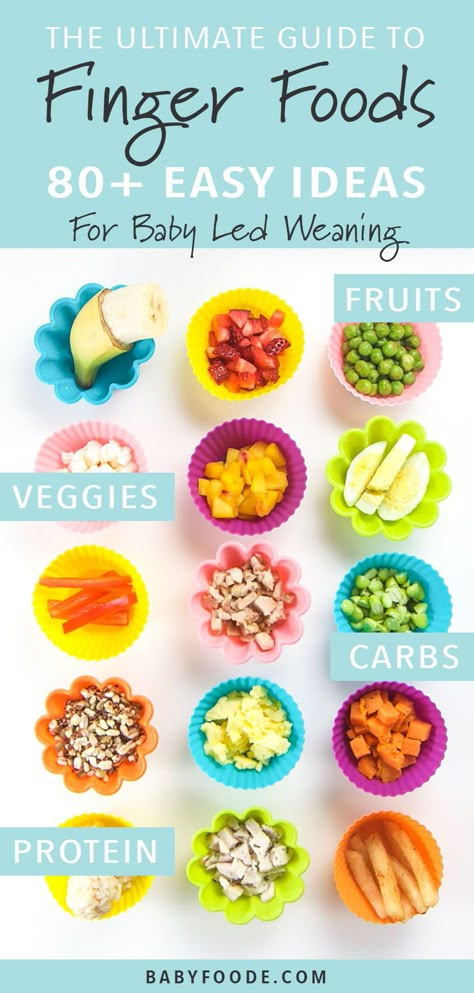 The fact is that the gastrointestinal tract of an infant at a too early age (for example, 2-3 months) is not able to process certain foods. The mucous membrane of the digestive system is irritated, and this can provoke gastritis and other serious health problems.
The fact is that the gastrointestinal tract of an infant at a too early age (for example, 2-3 months) is not able to process certain foods. The mucous membrane of the digestive system is irritated, and this can provoke gastritis and other serious health problems.
IMPORTANT! At what age can you introduce your baby to new products? For children in good health, WHO recommends that complementary foods be introduced at 6 months of age. But for some babies, if there are certain medical indications, the doctor may advise you to do this earlier.
The recommendations do not provide a specific menu for each age, which must be followed. Much depends on the socio-cultural characteristics of different peoples and the individual pace of development of children. In most cases, the timing of the start of complementary foods varies from 4.5 to 6 months. Specialists distinguish the following signs of a child's readiness to try something new, in addition to the usual artificial mixture:
• the baby is not quite full of the mixture and asks to continue the meal;
• his first teeth have already erupted, he tries to chew them, takes and tries to taste food from adult plates;
• if you bring a spoon to the baby, he will begin to examine its contents and want to try it;
• the child sits confidently, can turn his head and control his body;
• The tongue thrust reflex fades so baby can drink water from a spoon without it dripping back out.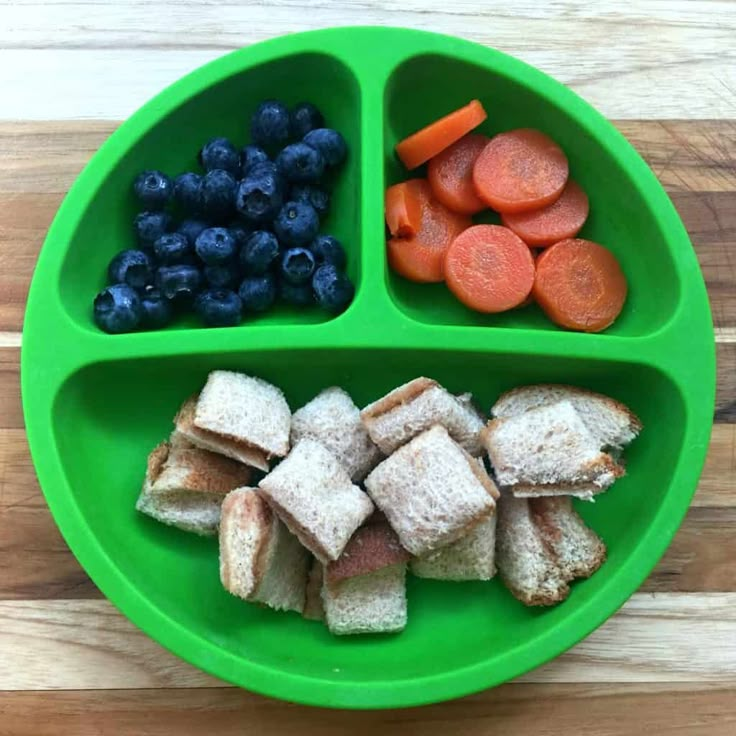
It is not necessary that all of the listed features be present at once. If several of them are observed, then it is quite possible to try to introduce the first complementary foods.
Read also: How much does a newborn eat per feeding?
When to delay feeding
It is better to delay feeding if:
• the child is ill;
• less than three days have passed since vaccination;
• the baby is teething, he does not sleep well and is naughty;
• there have been some changes in the family's lifestyle, such as moving to a new home, mother going to work, traveling to another city or country;
• the crumbs have manifestations of allergies, upset of the gastrointestinal tract;
• The weather is too hot outside.
Therefore, complementary foods should only be offered to a child when he is completely healthy, calm and in a good mood.
Basic rules for the introduction of complementary foods
Anna Levadnaya, pediatrician, Candidate of Medical Sciences, explains that the principles of introducing complementary foods on natural and artificial feeding are similar: it is recommended to focus on food interest, signs of a child's readiness for introducing complementary foods. The only thing is that with exclusive breastfeeding, it is not recommended to supplement the child with water, while bottle-fed children can be offered water.
The only thing is that with exclusive breastfeeding, it is not recommended to supplement the child with water, while bottle-fed children can be offered water.
Video: 10 rules for complementary foods
Author: pediatrician, Ph.D. Komarovsky E.O.
The rest of the principle is the same: for both breastfeeding and formula-feeding, you should offer your baby a new food before feeding, and then supplement it with breast milk or formula.
In order for new products to bring benefits to the baby on artificial feeding and not harm his health, you should follow a number of simple recommendations.
1. Complementary foods are usually given in the morning before the main formula feeding. This allows you to track the reaction to unfamiliar food during the day and take action if necessary.
2. It is necessary to carefully monitor the cleanliness of children's dishes, pots and blenders. The gastrointestinal tract of an infant is very sensitive to infectious agents.
3. New food is introduced into the baby's diet from a quarter of a teaspoon. If he tolerated the product well, then within a week the portion is brought to one or two tablespoons. Then you should look at the desire of the child and his well-being, and also take into account the recommendations of the pediatrician.
4. The first dishes should be of a liquid consistency, then they are made into a puree, and only closer to a year can you give soft pieces to chew. Pediatricians advise adding butter and vegetable oils to them as vegetables and cereals are introduced into the diet.
5. In order to protect the child's body from pathogens that may be contained in unprocessed food, complementary foods should first be boiled, stewed or baked. The baby is offered slightly warm food: the optimum temperature is 36-37 degrees.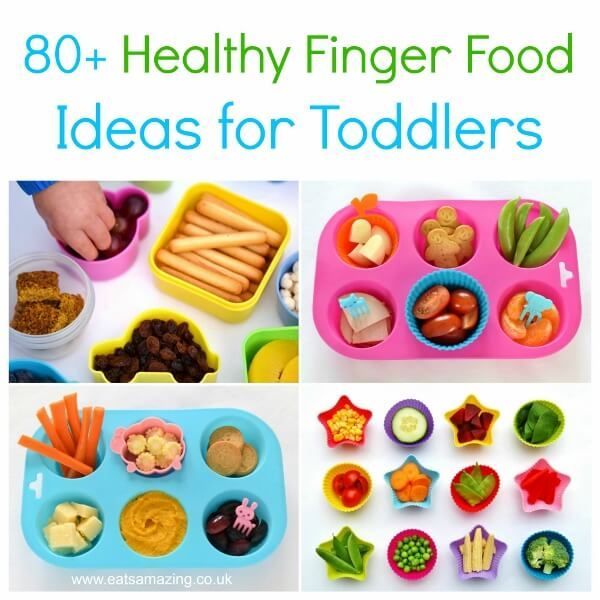
6. It is advisable to try the products immediately from a spoon. If the baby gets used to the bottle, this will slow down the formation of the skill of chewing food and may subsequently affect diction.
7. A food diary can help you reliably identify what your child has an allergic reaction to. It should record everything that the baby ate during the day, in what quantity and at what time. You can also record in a diary whether he liked the new dish or not.
8. Complementary foods should be introduced only from mono-products. Only after making sure that vegetables, cereals, juices, fruits or protein products are well tolerated by the child, you can offer their mixes.
9. The interval between introduced and new complementary foods should be at least a week. Such a period of time will allow the child's body to adapt to the expanded diet and perceive other dishes without unpleasant surprises.
10. If an allergy occurs to any product, it should be immediately removed from the menu and consulted by a pediatrician. It will be possible to return to this complementary food no earlier than in a month.
It will be possible to return to this complementary food no earlier than in a month.
11. It is desirable that with the introduction of complementary foods, the infant receives a sufficient amount of liquid. It can be both ordinary water and compotes.
12. Do not offer your child foods that are considered highly allergenic as first foods: full-fat cow's milk, citrus fruits, gluten-containing cereals, chicken eggs, etc.
13. Do not force-feed a child, even if you think that he is hungry. A small person has the right to defend his opinion in the choice of dishes.
14. Feed your baby exclusively in a sitting or reclining position to avoid the risk of aspiration. Very convenient for this purpose are special highchairs made of easy-to-clean material.
From 7–8 months, formula-fed mashed or pureed food, such as a banana, can be used as complementary foods. If semi-solid food is not introduced into his diet in time, problems may arise with the intake of solid food in the future: after a year, the child will refuse it completely. From 8–9 months, the child should be offered the so-called finger food: cut soft fruits and vegetables into pieces, such as boiled carrots, potatoes, and offer them to the baby. If you follow this scheme, by the year the child will be ready to eat solid food from the common table, Levadnaya explains.
From 8–9 months, the child should be offered the so-called finger food: cut soft fruits and vegetables into pieces, such as boiled carrots, potatoes, and offer them to the baby. If you follow this scheme, by the year the child will be ready to eat solid food from the common table, Levadnaya explains.
Complementary Feeding Schedule
We provide a suggested complementary feeding schedule for up to a year to guide you unless advised otherwise by your doctor. As a standard formula-fed babies with normal weight gain are offered products in approximately the following order:
• vegetable puree;
• cereals;
• fruit puree;
• kefir;
• butter and vegetable oil;
• children's biscuits and bread;
• meat puree;
• fish puree.
The earlier introduction of vegetable puree rather than fruit puree is due to the fact that the former has a more insipid taste. Having fallen in love with sweet apples and bananas, the child may subsequently refuse to eat zucchini, pumpkin, etc. However, if the infant is underweight, the doctor may recommend porridge as the first complementary food for him. They are more high-calorie and allow you to gain the missing kilograms faster. Each type of complementary food is described in the table.
However, if the infant is underweight, the doctor may recommend porridge as the first complementary food for him. They are more high-calorie and allow you to gain the missing kilograms faster. Each type of complementary food is described in the table.
| Vegetables | They are usually offered to children in the following order:
Tomatoes, white cabbage and cucumbers are recommended to be included in the menu already after a year. |
| Fruit | Seasonal fruits are recommended. The approximate order of their introduction: apples, pears, peaches, apricots and bananas. If the baby suffers from constipation, you can carefully and with the permission of the pediatrician offer him plums. |
| Kashi | To start complementary foods, choose gluten-free cereals: buckwheat, rice, corn grits. After the child is 8 months old, you can gradually give him a taste of oatmeal, wheat and barley porridge. It is better to refuse semolina altogether, since it contains very few useful substances and at the same time it is very high in calories. Cereals can be ground in a coffee grinder or mashed from ready-made cereals in a blender. |
| Protein products | Fermented milk products do not need to be introduced earlier than 8 months, since only by this time do children begin to produce the enzymes necessary for their processing. From meat, children under one year old should be given rabbit, chicken, turkey and veal. Sea fish is more suitable - hake, cod or flounder. Meat and fish are offered to kids in grated form as part of vegetable dishes and cereals. Cottage cheese can be prepared for the baby yourself. |
IMPORTANT! It is undesirable to add salt, sugar and spices to food for a child. His taste buds are not yet accustomed to strong stimuli, so it is better for him to appreciate the natural taste of the food offered. Soup should be boiled only on vegetable broths, and meat should be added to an already prepared dish. Meat broth may be too heavy for the baby's kidneys.
How to choose complementary foods
The main recommendations for choosing specific foods to start complementary foods are as follows:
1. It is recommended that your baby's diet be based on products grown in the region where he/she lives. If the period of the first feeding falls on the winter, it is advisable to stock up vegetables, fruits and berries from your garden in advance, putting them in the freezer for safekeeping. In the event that this is not possible, you can give preference to ready-made canned mashed potatoes. They undergo mandatory certification confirming the quality.
In the event that this is not possible, you can give preference to ready-made canned mashed potatoes. They undergo mandatory certification confirming the quality.
2. It is advisable not to buy store-bought juices for your child in large quantities. Compotes will be much more useful for him. You can also offer decoctions of dried fruits.
3. If you decide to buy ready-made food for your baby, then pay attention to the label and the release date. The product must be age appropriate and fresh. The composition should not contain salt, sucrose, dextrose and other extraneous additives.
In general, it is worth remembering that the first food offered to a child should be puree-like, not too viscous products, consisting of one ingredient, soft consistency, without added sugar, salt and spices, says Andrey Mosov, head of the expert direction of NP Roskontrol, doctor on nutritional hygiene of children and adolescents. He insists that preference should be given to industrial prepared meals, as such products have been tested and certified.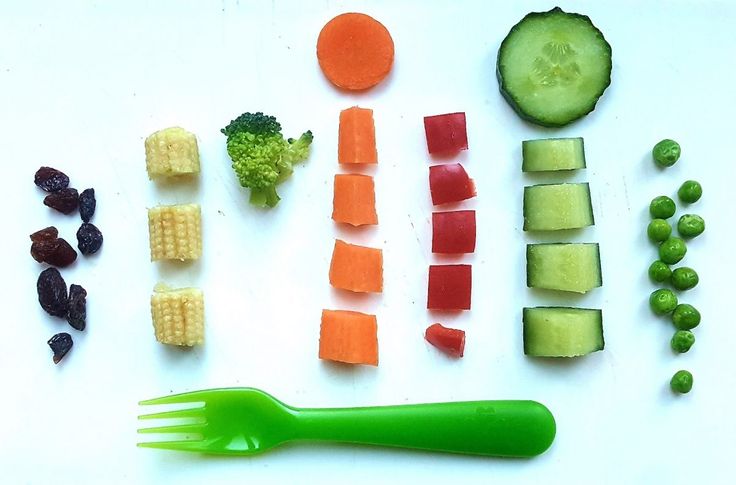 There are no guarantees with mashed homemade vegetables.
There are no guarantees with mashed homemade vegetables.
Introduction of complementary foods to formula-fed premature babies
The question of the correct introduction of complementary foods to a premature baby should be discussed individually at a pediatrician's appointment. In order for the body to be able to process a new product, organs and systems must be sufficiently mature and prepared. The quality of food digestion largely depends on the production of special enzymes, so you should not be self-motivated in compiling the baby's menu.
The schedule for the introduction of complementary foods will be determined by the presence or absence of anemia, the rate of weight gain, the tendency to allergies, and some other nuances. Formula-fed premature babies are usually advised to start introducing meat and egg yolk earlier. It is advisable to cook porridge on a vegetable broth or mixture, and not on water, since then they will be more nutritious and healthy.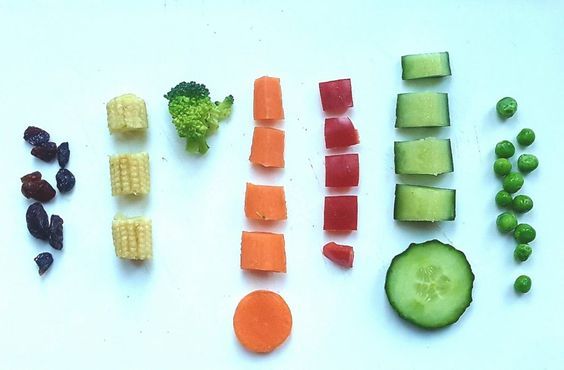
IMPORTANT! However, the course of complementary foods must be monitored by a pediatrician. The doctor monitors the child's reaction to new products, evaluates the dynamics of growth and general physical development. The scheme may change if any deviations from the norm are detected during routine inspections.
Answers to frequently asked questions for mothers
• What foods should not be given to babies under one year old?
It is forbidden to give cow's milk to babies under the age of one, as it can cause allergic reactions and digestive disorders. It is perfectly replaced by adapted mixtures from modern manufacturers. In addition to milk, it is not recommended to include nuts, citrus fruits, exotic fruits and vegetables, red fish and honey in the menu of the crumbs of the first year of life.
• What should I do if my child absolutely does not want to eat complementary foods?
Wait a while and try to offer food again, but don't insist on another refusal.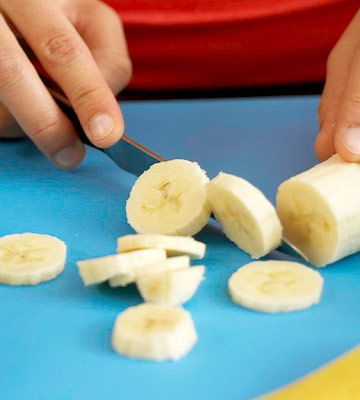 Perhaps the baby did not like the new dish because of the unfamiliar taste. Children are big conservatives and are often wary of change. Be patient, do not rush to introduce complementary foods. Show your child with what appetite you yourself eat from your plate, and then he may have a desire.
Perhaps the baby did not like the new dish because of the unfamiliar taste. Children are big conservatives and are often wary of change. Be patient, do not rush to introduce complementary foods. Show your child with what appetite you yourself eat from your plate, and then he may have a desire.
• What should I do if my baby has problems with stool while weaning?
If a child has a stool retention of more than three days during the introduction of complementary foods, then we can talk about constipation. In this case, you need to visit a pediatrician, as well as immediately exclude fixing foods from the menu and give more fluids to drink. If the stool has become too frequent (more than 5 times a day), then this may be due to indigestion or an intestinal infection. Be sure to consult your doctor about this.
• What should I do if I have an allergy to complementary foods?
It is advisable to take care of this issue even before the introduction of complementary foods, asking the pediatrician observing the child to prescribe an antihistamine drug that is optimal for his age. You should also carefully fill out the food diary at first. With it, it will be possible to identify a possible allergen and exclude it from the baby's menu, preventing more serious health consequences.
You should also carefully fill out the food diary at first. With it, it will be possible to identify a possible allergen and exclude it from the baby's menu, preventing more serious health consequences.
• How do you know if a baby tolerates complementary foods well?
Normal weight and height gain, regular bowel movements, and the absence of allergic skin rashes indicate the successful introduction of complementary foods. If the baby is cheerful, active, he has a good appetite and a good sleep, most likely, this means that you are doing everything right and the selected diet suits him.
However, it is impossible to completely refuse artificial formula when introducing complementary foods, even when the infant eats complementary foods with appetite. His body is not yet ready for a complete change in the type of food and may malfunction. This often manifests itself in the form of allergies, stool disorders or growth retardation. Remember that the baby should enjoy the new food.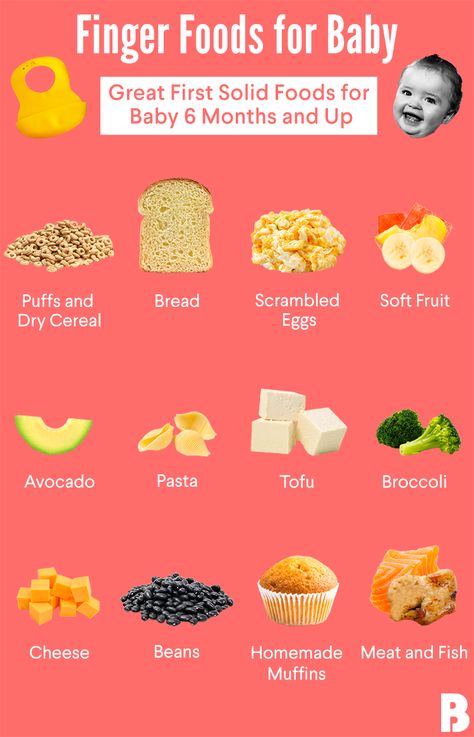 Only under this condition will he form the correct eating behavior.
Only under this condition will he form the correct eating behavior.
4 to 6 months
Breast milk is the best food for your baby.
It is very important that the baby consumes breast milk for as long as possible.
The right age to start complementary foods
It is recommended to start introducing complementary foods into the baby's diet no earlier than 4 months, but no later than 6 months*. At this age, the baby is in the active phase of development and reacts with curiosity to everything new! Some babies at 4 to 5 months of age can no longer satisfy their appetite with breast milk alone and need complementary foods for healthy growth. Other children have enough breast milk, and they are ready for the introduction of complementary foods only after 6 months. The decision to start complementary foods should always be made according to your baby's development. Do you feel like your baby is not getting enough breast milk? Does your baby hold his head on his own, show interest in new foods or a spoon? Then it's time to start feeding.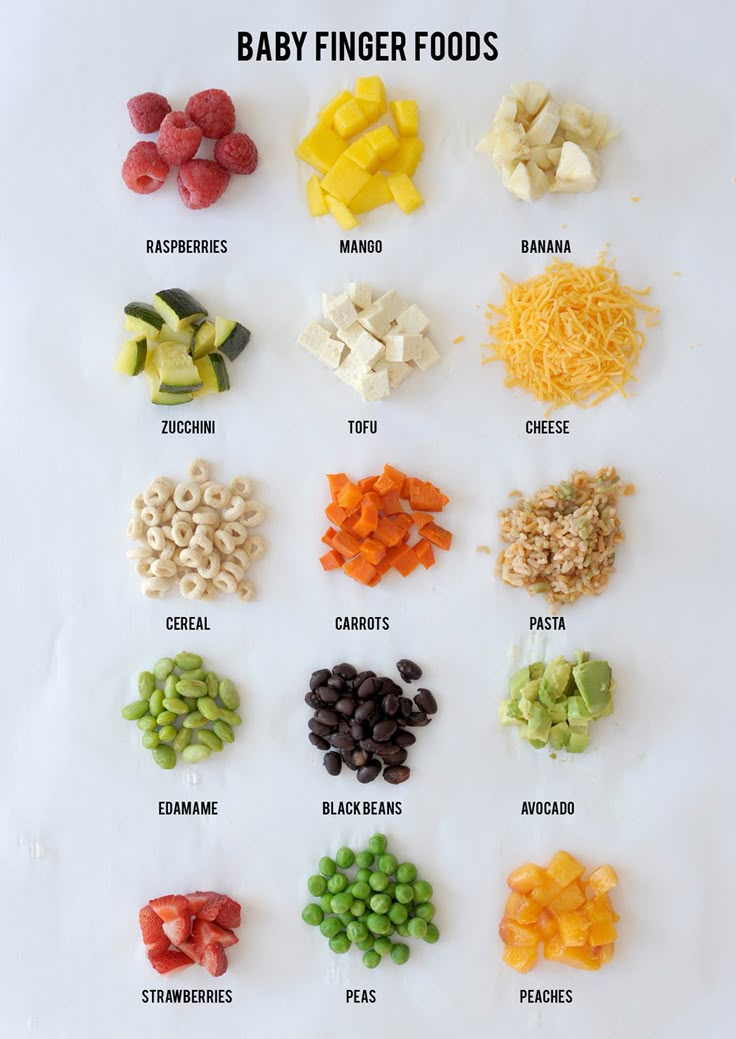 If in doubt, consult your pediatrician.
If in doubt, consult your pediatrician.
If your baby spits out the first spoonfuls of puree, be patient. After all, he must first learn to swallow it. Start with a few scoops and give your child time to get used to the new form of feeding.
*Recommendation of the Nutrition Committee of the European Society of Pediatric Gastroenterology, Hepatology and Nutrition (ESPGHAN)
Why is complementary food so important for the baby?
After 4-6 months of life, mother's milk or milk formula alone is not enough to supply the child's body with all the nutrients and necessary energy. In addition, the transition to solid food trains the muscles of the mouth. And finally, with the introduction of complementary foods, the child will get acquainted with the variety of taste directions, which is also important for his development.
When to start complementary foods?
Gradually replace one breastfeed with complementary foods. First for lunch, then for dinner and finally for lunch.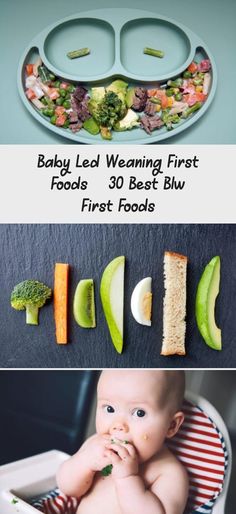 The mouse eats breakfast with the usual dairy food.
The mouse eats breakfast with the usual dairy food.
Starting complementary foods with HiPP products is easy. The first spoons will be vegetable or fruit purees HiPP:
First step: lunch
We recommend that you start complementary foods at lunchtime with HiPP vegetable puree (for example, "Zucchini. My first puree", "Cauliflower. My first puree" or "Broccoli .My first puree"). Then, for satiety, feed your baby as always: breast or bottle. The amount of vegetable puree can be increased daily by 1 spoon. Be patient if your baby does not immediately love vegetables. Try repeating the vegetable puree in the following days. Next week, you can expand your diet with other varieties of HiPP vegetables (for example, "Carrots. My first puree" or "Potatoes. My first puree").
If your baby tolerates vegetables well, in the third week you can introduce grain porridge into the diet, and as a dessert, offer a few spoons of fruit puree enriched with vitamin C. Vitamin C helps to better absorb iron in the body.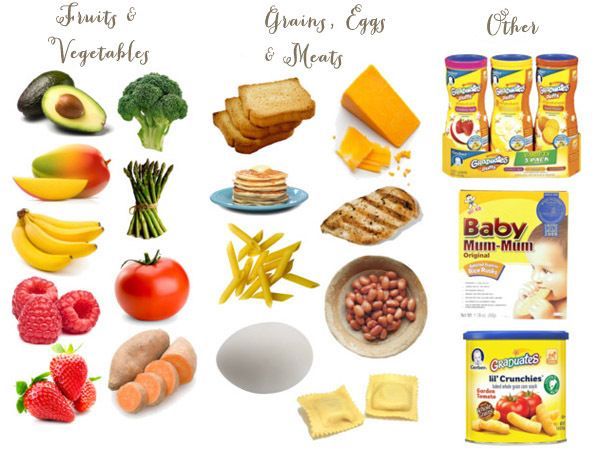

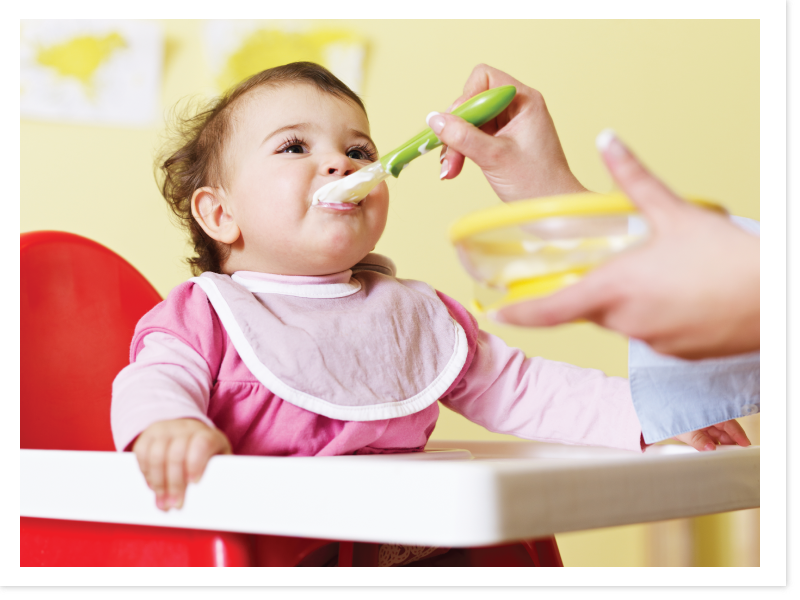
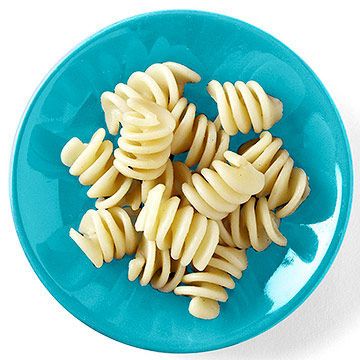 This will require pasteurized milk 2.5% fat and sourdough. After the milk turns sour, it is placed in a water bath and heated over low heat until the whey leaves. Then it remains only to drain the liquid through a colander or gauze and grind the resulting curd to make it more tender.
This will require pasteurized milk 2.5% fat and sourdough. After the milk turns sour, it is placed in a water bath and heated over low heat until the whey leaves. Then it remains only to drain the liquid through a colander or gauze and grind the resulting curd to make it more tender. 